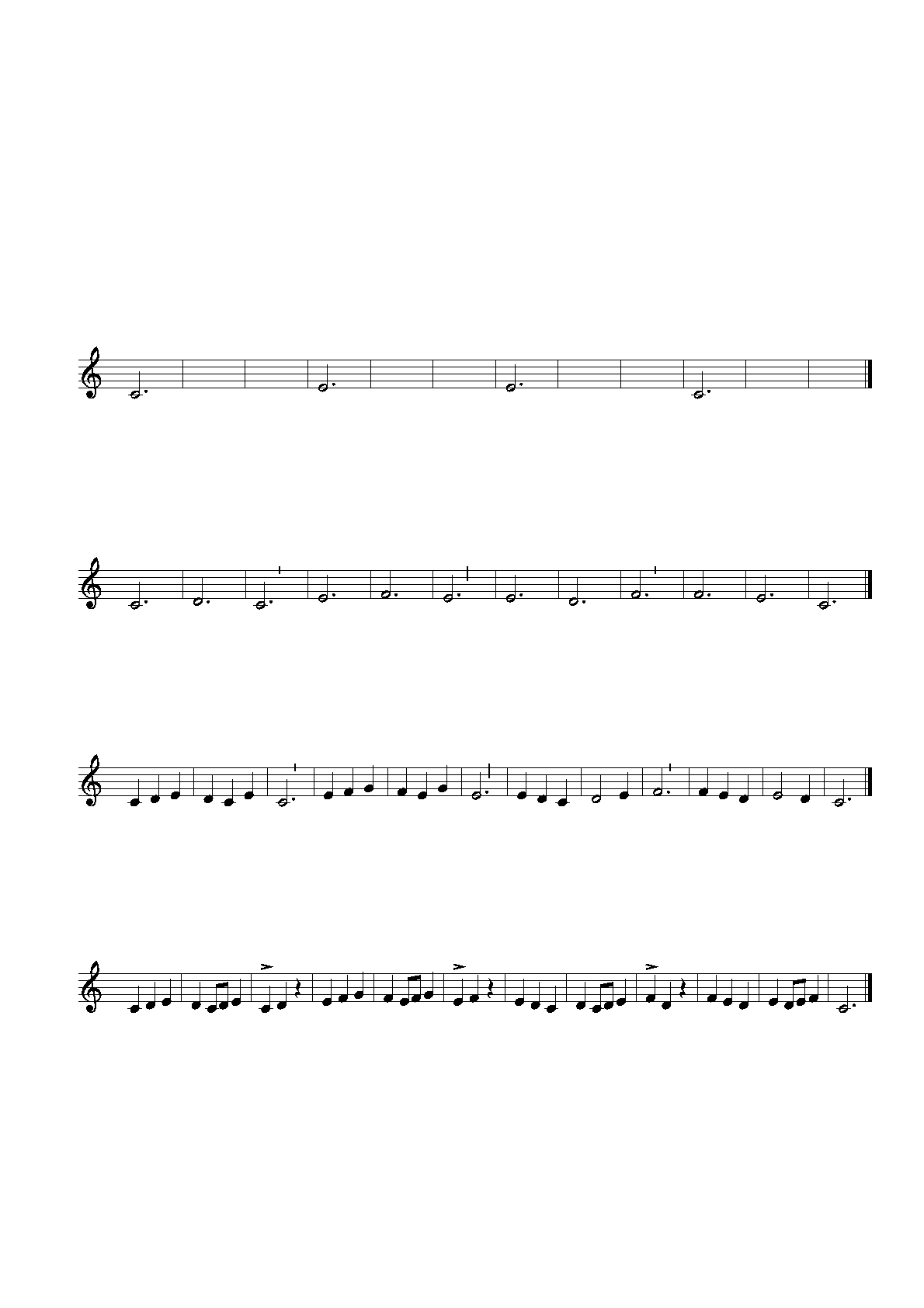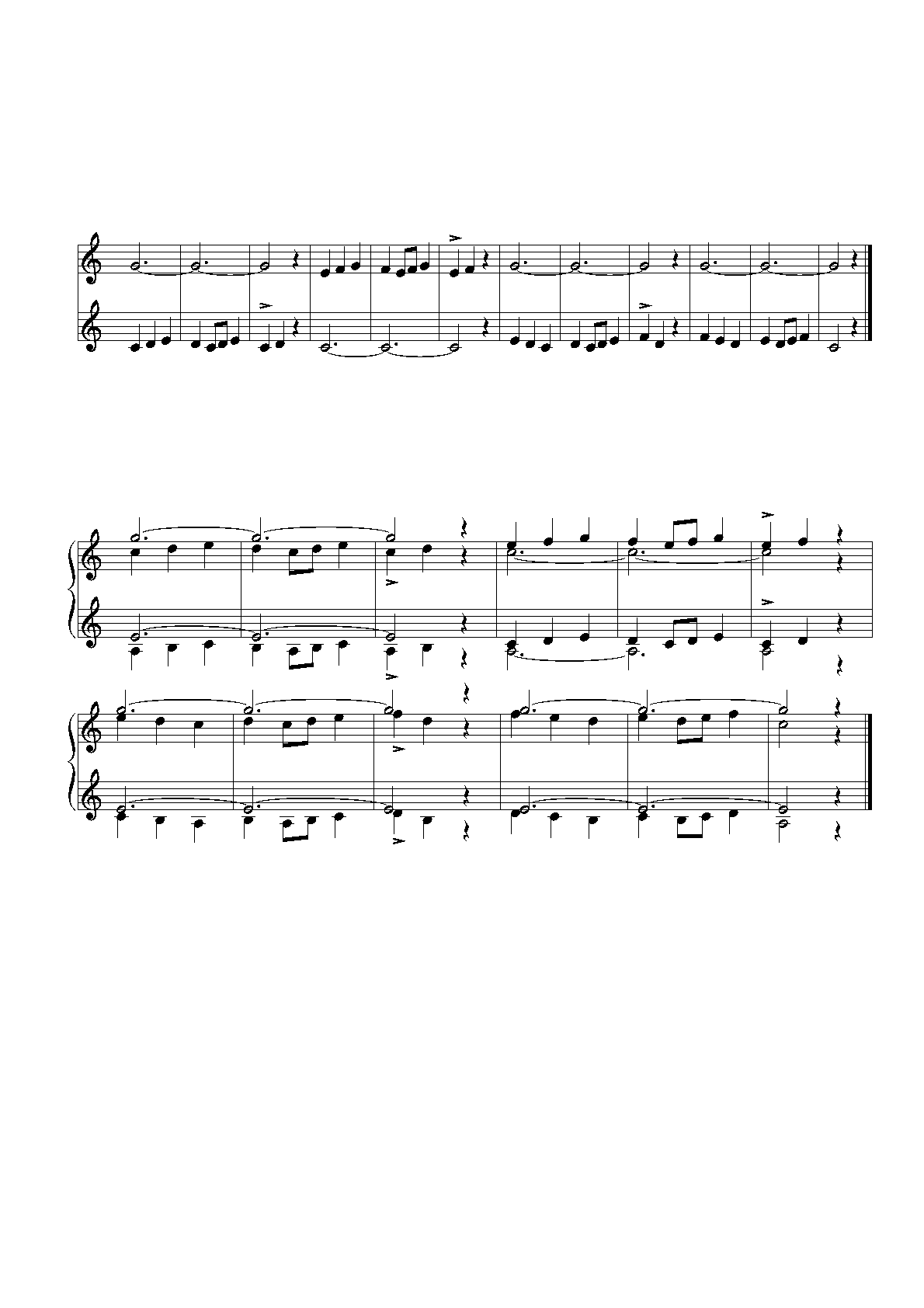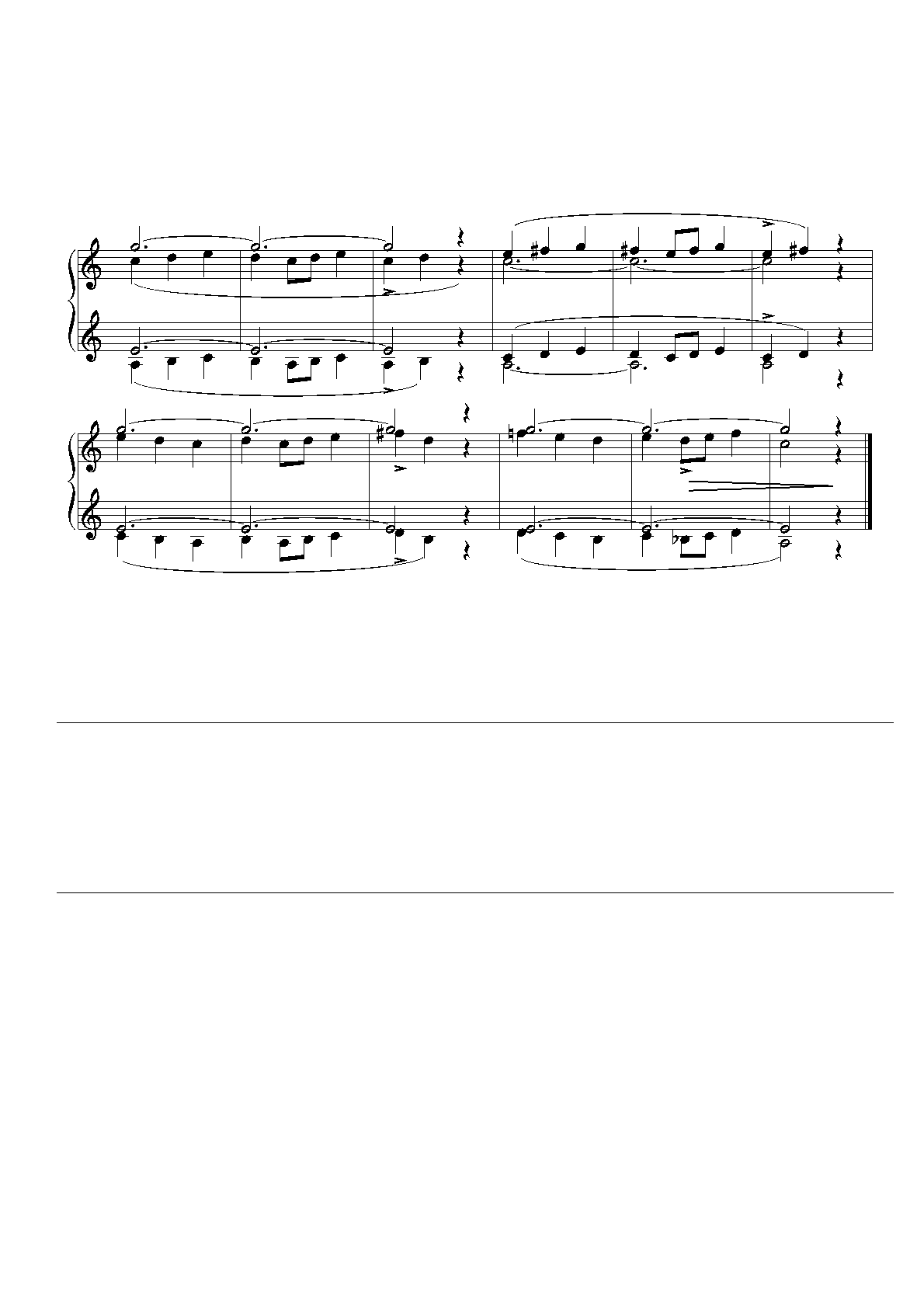
© 2010 Reinier Maliepaard: Recomposing Bartok's Mikrokosmos no. 56
www.bestmusicteacher.com
1
Recomposing Bartok's Mikrokosmos no. 56
Objective: application of organum and bourdon techniques to an easy melody
Step 1: point of departure an easy melodic frame (binary form, 6+6; 3/4; C major),
based on the tone C and E
^
1
^
3
^
3
^
1
4
3
Step 2: embellish this melodic frame of step 1 with neighbour and passing tones (stage 1)
condition: use only dotted half notes (minims)
Stage 1
^
1
^
3
^
3
^
3
^
1
4
3
Step 3: embellish the basic melody of step 2 with neighbour and passing tones (stage 2)
condition: use only dotted half notes, half notes (minims) or quarter notes (crotchets)
Stage 2
4
3
Step 4: make the melody more powerful by inserting one of more clearly defined motives (stage 3)
condition: use only dotted half notes, half notes (minims), quarter notes (crotchets) or
eight notes (quavers)
Stage 3
4
3
Comment: motive A in bar 2 and motive B in bar 3. Motive A integrates the melody.
Motive B (two tone and a rest) connects the melody segments strongly in terms of directional motion.

© 2010 Reinier Maliepaard: Recomposing Bartok's Mikrokosmos no. 56
www.bestmusicteacher.com
2
Step 5: make a two part version by applying a sustained voice to this melody
cf. the bourdon technique in the 12th century organum from the Ars Antiqua (1)
4
3
4
3
Step 6: make a four part parallel organum version according to the following procedure:
1. transpose the version of step 5 a third lower
2. apply this transposed version to the version of step 5
3. transpose the version of step 5 an octave higher
4
3
4
3

© 2010 Reinier Maliepaard: Recomposing Bartok's Mikrokosmos no. 56
www.bestmusicteacher.com
3
Step 7: finishing touch (dynamics, phrasing, a Lydian raised 4th tone F# and a lowered B in bar 11)
4
3
4
3
f
7
Comment: the result can be seen as an elaboration of the chord A - E - C - G
Footnotes
(1) The website http://www.mdw.ac.at/ive/emm/serbia.htm shows that organum or bourdon singing
is still existent in folk music of Serbia.
About the author:
Reinier Maliepaard, psychologist, software engineer, organist and teacher at the ArtEZ Conservatorium Netherlands (music theory and music history).
Maliepaard maintains several internetsites as www.bestmusicteacher.com en www.artezmusictools.nl.
His freeware music notation programm MC Musiceditor (Windows) can be downloaded at www.mcmusiceditor.com.
The original PDF-article has been typeset with MC Musiceditor 6.0.6 (www.mcmusiceditor.com - www.bestmusicteacher.com). The HTML-version is a
conversion from the original PDF-file, using the free PdfEdit995 (http://www.pdf995.com)


